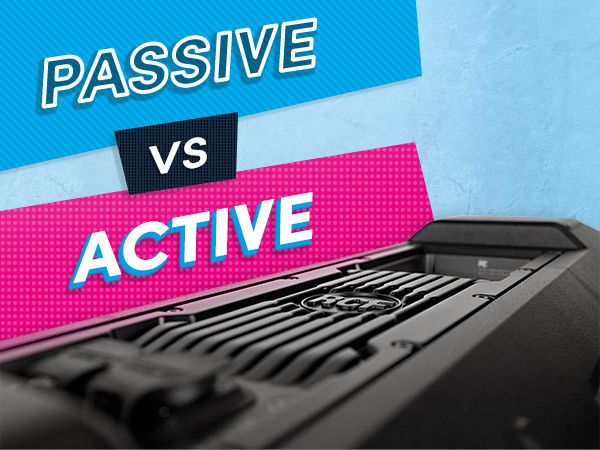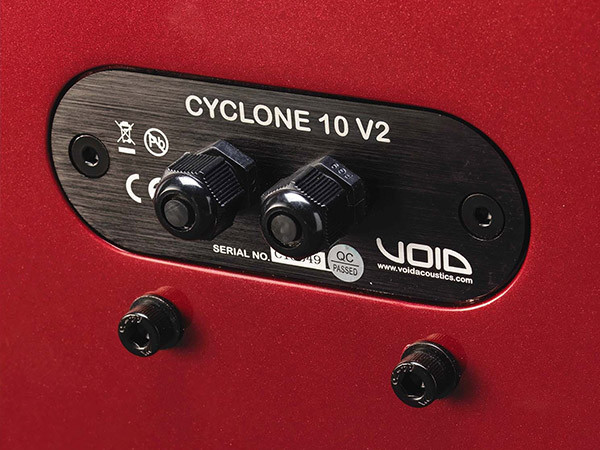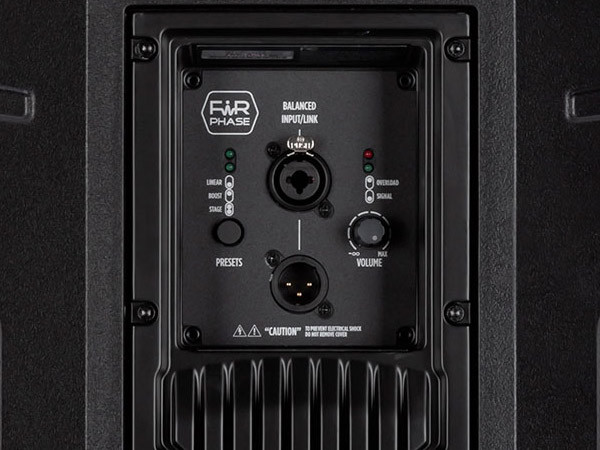Passive vs Active Speakers, What's the difference?
Posted on: 7th July 2022
There’s a lot of things to consider when looking for a speaker that’s ideal for your needs, one thing that you’ll come across is whether the speaker is Active or Passive. So, what does this mean? Put simply, an Active speaker gets its power from a built-in amp, whereas Passive speakers are driven by an external power amplifier. While there’s plenty of benefits to using Active and Passive speakers, there’s also a lot of differences making it a somewhat challenging task to find the right one for you.
Biggest Benefits
Both Active and Passive have their own uses depending on the setup you’re going for. Active speakers come in all shapes and sizes for applications ranging from small pub events to large productions. Having a built-in amplifier makes it easier to choose the right number of speakers to fill a space without having to spec additional compatible equipment. Active speakers also only require a power cable and audio source with many models also featuring built-in mixers and Bluetooth or Wi-Fi connectivity; this is a big bonus for smaller environments such as pubs and event spaces as well as cutting down on set-up time and taking up less space in transit.
Passive speakers have their place too, especially if you’re looking to fill a large or complex space such as an office, shopping centre, or create a system for a large-scale production. Since Passive speakers don’t require a direct power source, you can power multiple units from a single amplifier and daisy chain them together. Most Active speakers however, need power delivered to each speaker individually, which can mean a lot of additional cables. Although, some Active speakers (like the HDL-6A) allow you to draw power through a neighbouring speaker, cutting down on the number of cables required and streamlining you setup.
Another benefit of Passive speakers is that you have a lot more control over the system. By pairing your speakers with the right kind of amplifier and DSP configuration, you can fine tune and tailor your sound however you like. With an Active speaker all the components are integrated so you can’t change specific components of the system; however, many Active speakers still have a limited number of pre-defined DSP settings that can be changed depending on the application. Another thing to consider is that while Active speakers are less configurable than Passive, the built-in electronics have been engineered and tuned by the manufacturer to work as well as possible, removing work for the user.
Biggest Drawbacks
One of the biggest drawbacks of Active speakers is that if the built-in electronics break down, the speaker won’t work and can be costly to repair. In a Passive system the amplifier is not integrated so you can simply just replace the amplifier without having to replace the speakers.
A common problem with Passive systems, is that the speakers can be easily overloaded and damaged by using too much power or the wrong amplifier. This usually happens when a non-technical user turns up the power to make everything louder, stressing the system and causing damage. On the other hand, Active speakers generally have a built-in failsafe to stop the amp from driving the speaker so hard that it breaks.
Now when it comes down to the price, Active speakers will generally cost more than Passive speakers; however, this higher price point also comes with a much easier setup. You won’t need to research which amplifiers your system is compatible with because the system is already complete. Although, once you invest in your Active speakers, you’re stuck with them; so, depending on your project, it might be worth while doing some research into a Passive system so you save a bit of money and have the ability to upgrade and change as you see fit.
To Conclude
So, which is better? Active or Passive? Well, you can’t exactly say one is superior to the other because it all depends on your requirements. There’s just as many benefits to using an Active speaker as there are to a Passive speaker so you can’t go wrong with either; it’s all about how the speakers are being used. If you want to be able to have a quick setup, not worry about configuring and have a generally easier system to deal with then go for Active. If you’re looking for more control over your system – and have no problem with connecting additional equipment – then a Passive system might be for you.




